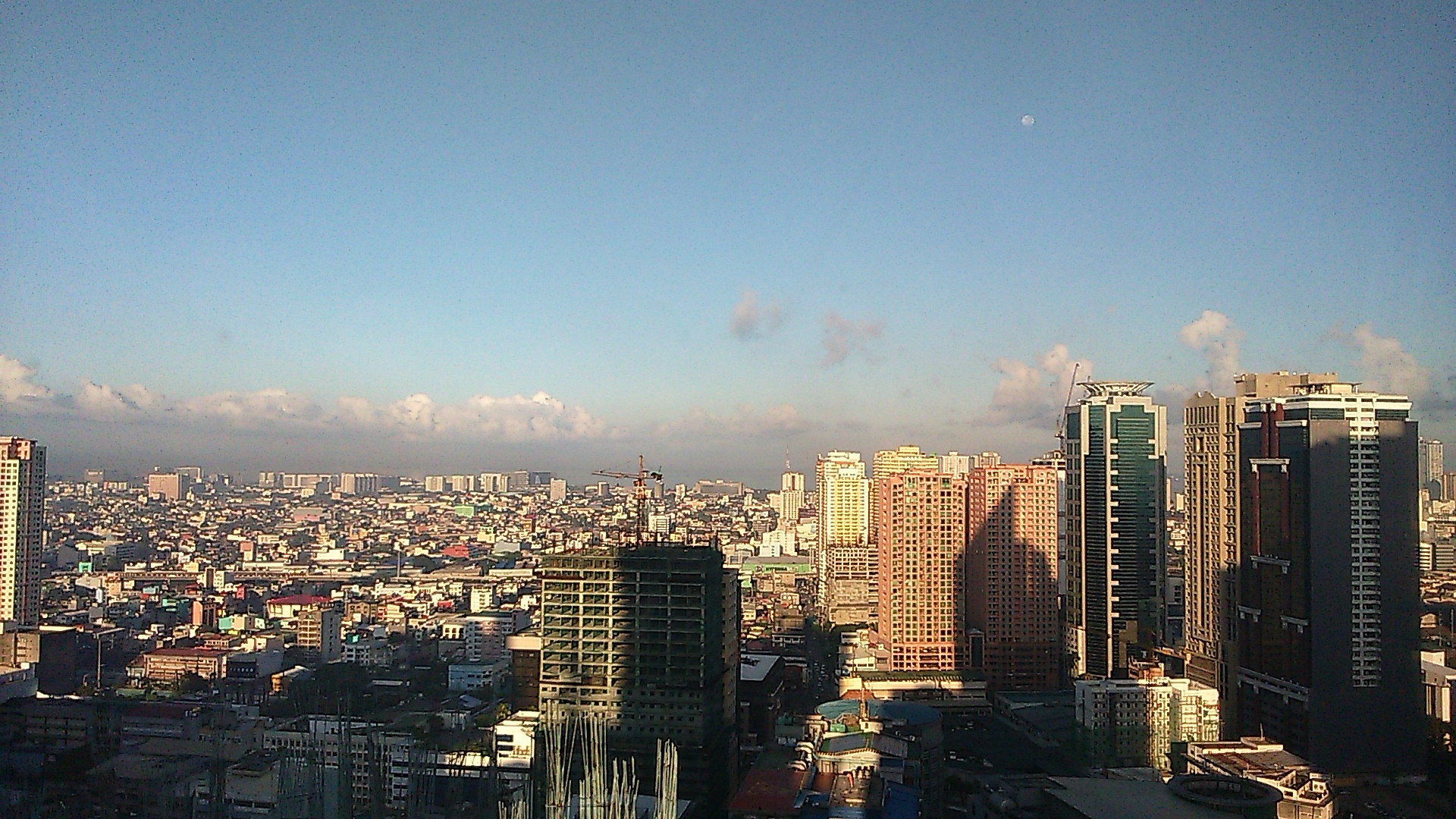
Uploaded on 2016-11-10 by Patrick Andrew Y. Tanhuanco
Image attached is view of Metro Manila from 30th FLoor where I was working as an Architect. Metro Manila is very dense, and at morning, smog is very visible. Step 1: List the five most liveable cities that you know, based on your own experience and judgment, placing the most liveable city at the top of the list. London Barcelona Copenhagen Hongkong Taipei Step 2: Describe in your own words five characteristics that according to your opinion make a city liveable. Order them placing the most important at the top of the list. 1.Efficient Mobility / Accessibility – I believe is the most important to a city. The streets, pedestrian pathways, public transport, are all key to connecting the different areas, services, and facilitate the movement of people and goods. A livable city must have efficient street network, bike network, options for public transport, minimal traffic congestion, and easy to move around from one place to another. And lastly prioritizes pedestrians. 2.Diverse Activities and opportunities – In a city there must be a diverse environment, not just culturally, but most importantly being able to provide an environment that fosters diverse activities, programs, that caters to different needs and aspirations of people. (jobs, forms of entertainment, music, dining, sports, etc) 3.High Density – I personally prefer a denser environment (such as cities like Manila, Hong Kong), in terms of more people per square kilometer. Having more people improves the diversity and demographics. Also it is more exciting, and more ‘alive’ to be in places with lots of people. It is important to also consider a local government and citizens that care or mind about the city’s development and improvements. Not to discount the importance of having ample provisions for affordable, decent housing for citizens. 4.Efficient, reliable Services – a city cannot be complete and livable without proper services to support its inhabitants: public facilities such as schools, libraries, museums, galleries; police, fire, waste disposal, health services etc. 5.Pleasant Environment – Environment is one of minimal pollution, more open spaces for people to enjoy, relax and improve one’s wellbeing. One that feels safe even when walking at streets at night. And helps people feel at ease when navigating the city. It must have its own unique characteristic and architecture, also fostering connectivity rather than individuality or the ‘dog-eat-dog’ mentality characteristic of mega cities. Step 3: Describe the status of your own city in terms of the five characteristics that you listed above. Propose how your city should/could be transformed in relation to these characteristics in order to be more sustainable. The city I live in is in Manila, Philippines: 1.Mobility / Accessibility – Manila has many options for public transport, but it is very inefficient that its places are very inaccessible; traffic has gone from bad to worse. (A 10km distance with light traffic takes 15-20mins by car; but in Manila its common to reach 2hrs30mins or 3hrs.) In my opinion, this is a huge problem and should be both tackled in a systems approach of city planning, road access / networks, improvements in how public transport operates, and citizen awareness and participation. 2.Diversity of Activities and opportunities – Manila has many opportunities and activities that caters to different groups of people and their aspirations. However, it is very difficult to identify which areas are known for which activities and groups; There must be a concerted effort to put these activities, and groups on the map, and promote them as ‘hubs’ and destinations for citizens and visitors of the city to experience and appreciate. Areas sometimes are too spread out, thus efficient mobility (#1 again comes in to play). 3.Density – Manila is one of the densest cities in the world, and is also home to a lot of informal settlement communities. While the city is good for being dense, as it generates more activity, and movement of stocks (goods, money, people etc), it contributes more in waste and noise pollution. I believe proper zoning and public-private housing developments coupled with mixed-use areas and services can help distribute the density of an area evenly so people can also have equal opportunities. 4. Services – In Manila, private owned services and groups are more efficient than the government sponsored/operated services (such as security, fire protection, education etc). And it comes with a price. Those who are less fortunate are not treated equally and therefore, are not able to receive better services than those who can afford them. One main problem is corruption in local government. This is very difficult to achieve, since corruption is rather more of a moral issue than something that can be fixed with research and planning. I believe, efforts must be towards the improvement of providing affordable, fast and reliable services to the community to support the needs of citizens. 5.Environment – Manila is a mix of nice areas, and really dangerous areas. But mostly, its areas are not properly maintained, completely neglected. Maintenance – in my opinion is more of a cultural issue. Ownership is twisted – instead of taking care of things, some citizens think they deserve to do whatever they want to public objects and places since they are paying taxes. Architecturally speaking, Manila has many beautiful buildings, but are neglected over time. I would suggest rehabilitating, reinvesting in redeveloping the historical districts, making it more accessible and attractive to citizens and visitors. Public spaces must also be improved. As simple as the street and side walk for people to feel at ease when navigating the city. All these I believe are interconnected, and one is not exclusive of the other but must be integrated, and effects are dependent on the improvement of each characteristics